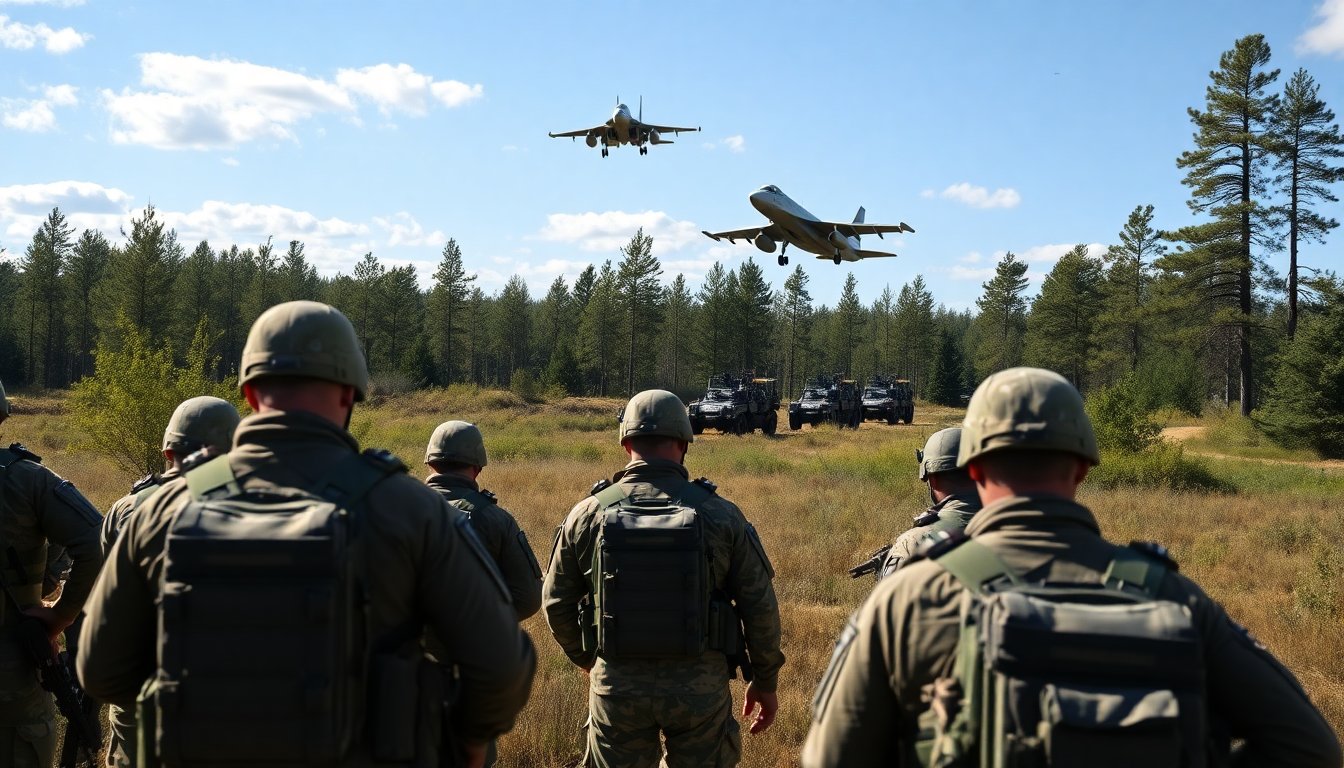Table of Contents
NATO conducts military exercise in Romania
NATO recently showcased its military readiness through a significant exercise in Romania, named Dacian Fall. The operation involved around 5,000 troops and aimed to affirm the alliance’s dedication to protecting Eastern Europe from potential threats, particularly from Russia. This exercise gains added significance following the recent troop reductions announced by the United States, as European nations strive to enhance their defensive capabilities.
Military exercise details
The Dacian Fall exercise unfolded in the strategic region of Transylvania, showcasing a variety of military maneuvers. This included the deployment of tanks, howitzers, and aerial support from fighter jets and drones. French Puma helicopters flew over the rugged mountains, highlighting the collaborative efforts of NATO allies. Major General Dorin Toma, commander of NATO’s Multinational Division South-East, emphasized that the primary objective of the exercise was to send a clear message of deterrence directed at Russia.
Context of U.S. troop withdrawal
The recent Dacian Fall exercise followed an announcement from the Pentagon about the planned withdrawal of approximately 800 U.S. troops from Romania. This decision has raised concerns among Romanian officials and NATO leaders regarding potential impacts on regional security. While some military analysts have minimized the operational effects of this troop reduction, they recognize that the political consequences could resonate throughout Eastern Europe, potentially encouraging more aggressive actions from Moscow.
Regional security dynamics
Romania, positioned at the crossroads of Ukraine, Moldova, and the Black Sea, plays a crucial role in NATO’s defense strategy. The country hosts multiple NATO bases and has actively participated in multinational military efforts since Russia’s invasion of Ukraine. Despite the withdrawal of U.S. troops, around 1,000 American servicemen will remain in Romania due to existing bilateral defense agreements, as reported by officials.
Romanian State Secretary for Defense, Sorin Moldova, has voiced concerns about the troop reduction, urging the United States to reassess its military strategy in the region. This perspective is shared among Romanian defense officials, who fear that a diminished American presence might create vulnerabilities in NATO’s deterrent capabilities.
International response and collaboration
NATO allies are being urged to strengthen their collaboration in response to the changing military landscape. Recent military exercises highlighted the necessity for rapid response mechanisms, particularly given the ongoing threats posed by Russia. NATO protocols dictate that member countries must be prepared to deploy a fully operational division within a defined timeframe. France has exemplified this capability by demonstrating its ability to mobilize troops and equipment efficiently.
General Maxime Do Tran from the French armored brigade addressed the logistical challenges encountered during the exercise. He detailed the extensive transportation efforts involved in deploying forces and equipment to Romania. The operation required the utilization of air, land, and sea routes, underscoring the complexities of military mobilization even in peacetime conditions.
Technological advancements and military readiness
The Dacian Fall exercise provided a critical platform for testing advanced military technologies, including various types of drones. For the first time, Romanian forces deployed Turkish-made Bayraktar TB2 drones, along with other unmanned aerial vehicles for targeting and reconnaissance. This exercise enabled participating nations to assess and enhance their military capabilities in real-time scenarios.
As NATO adjusts to the changing security landscape in Eastern Europe, the importance of comprehensive military cooperation is becoming increasingly evident. The ongoing collaboration between Romania and its allies, particularly France, highlights the necessity of solidarity in maintaining regional stability and deterring potential aggression.
The Dacian Fall exercise demonstrated NATO’s military readiness while underscoring the need for European partners to strengthen their defense capabilities. As U.S. troop commitments evolve, the threat of Russian aggression remains a critical concern. NATO’s dedication to collective security is more important than ever.


